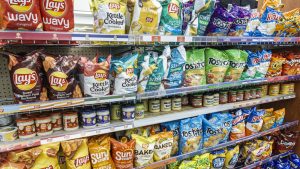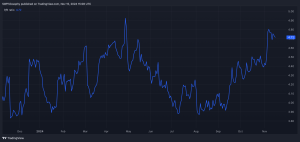Seven major automobile makers are combining efforts to expand a network of fast-charging electric-vehicle hookups in North America meant to mimic Tesla’s so-called Superchargers and to take advantage of subsidies from the Biden administration.
The joint venture announced Wednesday includes General Motors
GM,
Chrysler’s Stellantis
STLA,
Hyundai
005380,
Kia
000270,
Honda
7267,
BMW
BMW,
and Mercedes Benz
MBG,
These brands, combined, make up about half of total U.S. vehicle sales but account for only a sliver of the EV market, which has so far been dominated by Tesla
TSLA,
The joint venture has set a target of rolling out 30,000 fast chargers, starting along major highways and in cities.
With U.S. electric-vehicle sales expected to exceed 50% of total U.S. automobile sales by 2030, the expansion of reliable charging infrastructure will become even more critical.
“The fight against climate change is the greatest challenge of our time. What we need now is speed — across political, social and corporate boundaries,” Mercedes-Benz Group CEO Ola Källenius said in a statement. “To accelerate the shift to electric vehicles, we’re in favor of anything that makes life easier for our customers.”
In a statement, executives from the seven companies said a charging network built out like gas stations — with restrooms, food service and retail operations — would support a faster rollout of EVs.
A JD Power survey earlier this year found that perceptions of high purchase prices and relative scarcity of charging stations were the most-cited reasons consumers gave for not wanting an EV, followed by limited driving ranges and the times required to charge.
And delivering the type of EVs that consumers want remains a challenge for manufacturers, as EV rollouts often target the upper end of the market.
Separately this week, GM gave its recently canceled small EV, the Chevy Bolt, new life. “Our customers love today’s Bolt,” CEO Mary Barra said during a Tuesday earnings call. It has “some of the highest customer-satisfaction and loyalty scores in the industry.”
The decision came after the Bolt — which went through a massive recall in 2021 due to battery-fire risk — saw record sales in the first quarter.
The automobile makers in the new joint venture did not specify how much they would invest individually or collectively, and they left the door open for other companies to join the effort.
The new venture would compete against established EV-charging companies, including Volkswagen’s
VOW,
VWAGY,
Electrify America, ChargePoint
CHPT,
and EVGo
EVGO,
Tesla, which accounted for more than 60% of U.S. EV sales last year, has the largest network of fast chargers in the U.S., with almost 18,000 of its trademarked Superchargers. Superchargers can take a battery from 0% to about 50% in just 15 minutes and complete a full charge in about 70 minutes, which is much faster than traditional home chargers, which are typically used overnight.
Tesla, after meeting with White House officials earlier this year, said it would open part of its exclusive charging network to EVs from rival brands in order to be eligible for a share of funding from the $7.5 billion in federal subsidies — part of the Inflation Reduction Act — aimed at expanding the use of EVs. The Biden administration has set a target of 500,000 chargers by 2030, an almost fourfold increase over the current number.
Related: Tesla unlocks EV network. What’s next in push to make chargers ‘as easy as filling with gas.’
GM, Mercedes and other car manufacturers have signed on to adopt the charging technology developed by Tesla starting in 2025 in order to get access to the company’s Superchargers.
The other car companies in the new joint venture — Stellantis, Hyundai, Honda and BMW — have not committed to adopting the Tesla technology known as the North American Charging Standard (NACS). So far, they have product plans that rely on a rival format known as the Combined Charging System (CCS).
The new charging pact said it will support both CCS and NACS.
According to the U.S. Department of Energy, as of July 2023, there are 32,000 publicly available DC, or direct current, fast chargers in the U.S. With 2.3 million electric vehicles already on the road, that means there are 72 vehicles per charger.
The National Renewable Energy Laboratory estimates that 182,000 DC fast chargers will be needed to support the 30 million to 42 million plug-in vehicles expected to be on the road by 2030.
“We believe that a charging network at scale is vital to protecting freedom of mobility for all, especially as we work to achieve our ambitious carbon-neutrality plan,” said Stellantis CEO Carlos Tavares. Many automobile manufacturers have set targets for the coming years and decades to reduce or offset the amount of greenhouse-gas emissions
CL00,
— the chief factor in dangerous man-made global warming — that their products and operations send into the atmosphere.
This post was originally published on Market Watch






